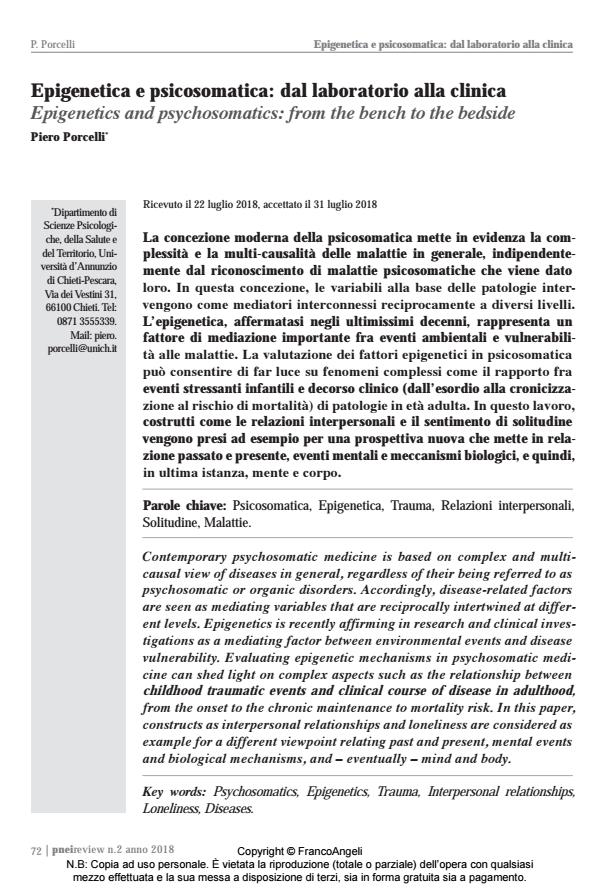Epigenetics and psychosomatics: from the bench to the bedside
Journal title PNEI REVIEW
Author/s Piero Porcelli
Publishing Year 2018 Issue 2018/2
Language Italian Pages 11 P. 72-82 File size 1091 KB
DOI 10.3280/PNEI2018-002006
DOI is like a bar code for intellectual property: to have more infomation
click here
Below, you can see the article first page
If you want to buy this article in PDF format, you can do it, following the instructions to buy download credits

FrancoAngeli is member of Publishers International Linking Association, Inc (PILA), a not-for-profit association which run the CrossRef service enabling links to and from online scholarly content.
Contemporary psychosomatic medicine is based on complex and multicausal view of diseases in general, regardless of their being referred to as psychosomatic or organic disorders. Accordingly, disease-related factors are seen as mediating variables that are reciprocally intertwined at different levels. Epigenetics is recently affirming in research and clinical investigations as a mediating factor between environmental events and disease vulnerability. Evaluating epigenetic mechanisms in psychosomatic medicine can shed light on complex aspects such as the relationship between childhood traumatic events and clinical course of disease in adulthood, from the onset to the chronic maintenance to mortality risk. In this paper, constructs as interpersonal relationships and loneliness are considered as example for a different viewpoint relating past and present, mental events and biological mechanisms, and - eventually - mind and body .
Keywords: Psychosomatics, Epigenetics, Trauma, Interpersonal relationships, Loneliness, Diseases
Piero Porcelli, Epigenetica e psicosomatica: dal laboratorio alla clinica in "PNEI REVIEW" 2/2018, pp 72-82, DOI: 10.3280/PNEI2018-002006